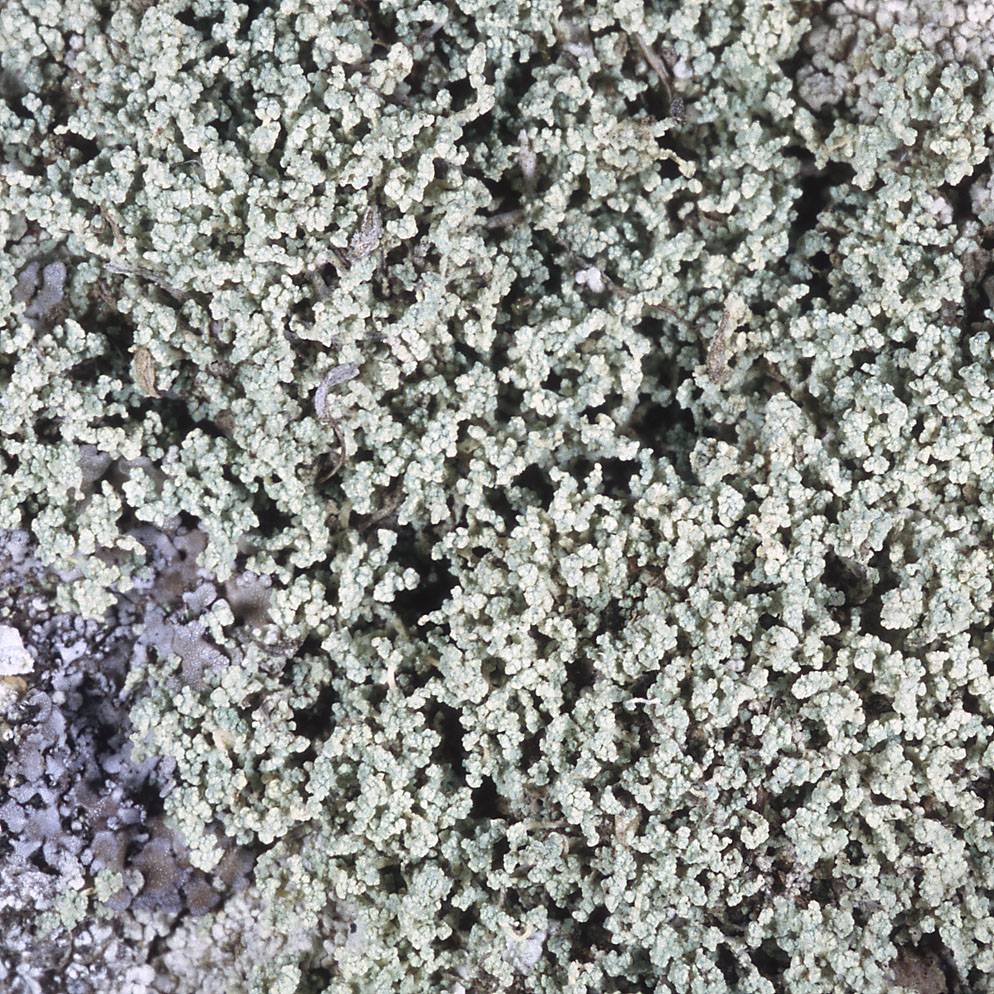
Consortium of Lichen Herbaria
- building a Global Consortium of Bryophytes and Lichens as keystones of cryptobiotic communities -
- Home
- Search
- Images
- Species Checklists
- US States: O-Z >
- US National Parks
- Central America
- South America
- US National Parks
- Southern Subpolar Region
|
Family: Leprocaulaceae |
Nash, T.H., Ryan, B.D., Gries, C., Bungartz, F., (eds.) 2002. Lichen Flora of the Greater Sonoran Desert Region. Vol 1. Life Habit: lichenized Thallus: crustose to dwarf fruticose upper surface: gray, ochraceous-yellow or white, ecorticate, smooth; isidia and cephalodia absent medulla: white photobiont: primary one a chlorococcoid alga (Trebouxia), secondary photobiont absent lower surface: absent or rhizose strands present; hypothallus absent primary thallus: ± persistent, densely powdery-leprose or crustose-verrucose-subsquamulose, diffuse, unstructured secondary thallus: subfruticose-dactyliform or dwarf fruticose-caespitose, attached by the whole lower surface or attached basal holdfasts; leprose-sorediate, floccose-tomentose granules or squamule-like structures superficially somewhat similar to phyllocladia of Stereocaulon pseudopodetia: small, slender, ± erect, ± terete, branching, interwoven, cartilaginous, fragile Ascomata: absent Conidiomata: absent Secondary metabolites: absent, or orcinol depsides, or orcinol depsidones, or ß-orcinol depsides (including atranorin s. l.), or ß-orcinol depsidones, or aliphatic acids, or dibenzofurans and usnic acids, or triterpenoids Geography: mainly Southern Hemisphere, but also in arctic-alpine to temperate areas of Northern Hemisphere Substrate: on bryophytes, soil, detritus, or non-calciferous, siliceous rock, in ± sheltered and dry areas, often in crevices. Notes: It is distinguished from Stereocaulon by the lack of ascomata, the absence of corticate phyllocladia, cephalodia, and pycnidia, and its different chemistry. The primary thallus, and sometimes the entire thallus, resemble that of some species of Lepraria. Although material externally rather similar to L. subalbicans (Lamb) Lamb and Ward occurs in at least in southern California (see Riefner et al. 1995), at present it cannot be readily distinguished from various other sterile crusts; in fact, the rather coarsely granular thallus and at best indistinct pseudopodetia make the placement of that species in Leprocaulon rather questionable. |
Powered by Symbiota









